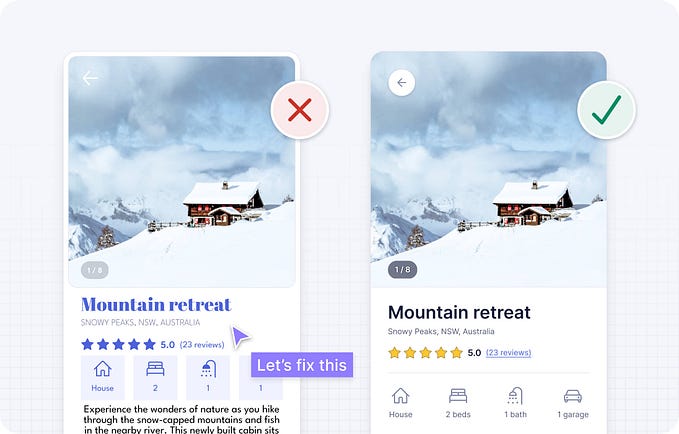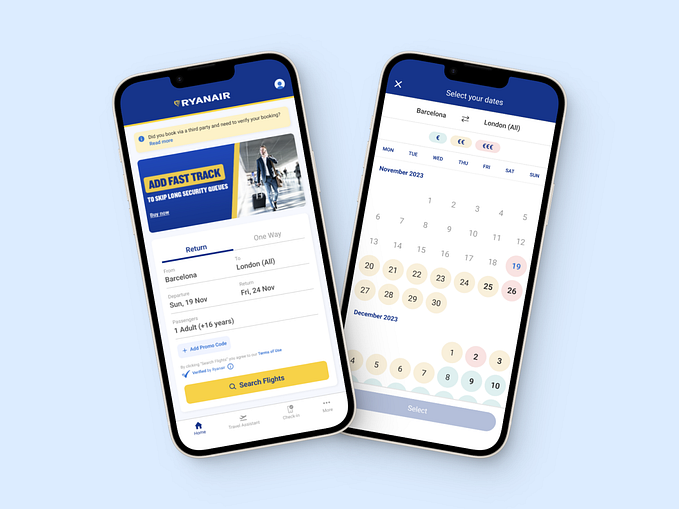Why User Experience (UX)?
Good UX is beneficial for both parties: a product’s users and the business investing in that product’s UX.

While the experience a person has with a product (the User Experience) should be an obvious thing worth optimizing, you may be surprised to hear that this is not universal in practice.
In fact, “only 55% of companies are doing any sort of UX testing”.
Companies with larger budgets and a greater understanding of the value of UX are more likely to devote their time, resources, and energy into developing their UX operations. Such companies are in Stages 4 and 5 of the UX Maturity Model below.

Smaller companies are likely to be Stage 1–2 but they should understand there is real value to investing in their UX operations. In this article, I’ll make the case for why, from a user perspective and a business perspective.
Why UX: For the User
The case for the user is straight-forward: people work hard and want to ensure their hard-earned money will afford them products that 1) work and/or 2) are enjoyable.
A person’s experience of a product is defined by its following design attributes:
- aesthetics—does the product look appealing?
- functionality—does it allow me to accomplish a task?
- usability—does its functionality shine through simplicity and efficiency?
When these attributes are positive in a product, they provide users with emotional value and utilitarian value.
- emotional value: “This product makes me feel ____.”
- utilitarian value: “I can use it to ____.”
Well-designed products leave the user feeling like they have experienced something enriching and delightful.
Think about a product or service that provided you with such an experience—for me, that was cloud storage technology (ex: Google Docs). While the concept itself was already revolutionary at face-value, it was the user experience’s intentional design, optimized through usability testing, that allowed the merits of the technology to truly shine.
If cloud storage technology had subpar design attributes listed above, my experience with it would’ve been marred by issues obfuscating the beauty of being able to store, access, and edit my files virtually anywhere. Because its user experience was designed to be so seamless, intuitive and convenient, I knew it was something special and worth integrating into my workflow (and maybe even paying for *gasp*).
In our day-to-day, we make 35,000 conscious decisions. The great value of Technology™ lies in simplifying and streamlining our daily processes and decision-making.
We valorize products (and brands) offering consistently satisfying experiences because they manage to stop the madness of ceaseless experimentation necessary to find something that works for—not against—us. Dependability confers great peace, a priceless and fleeting aspiration. And we reciprocate with our loyalty.
Products that are poorly designed are more of a headache than they’re worth. They don’t work as intended or they force you to go through great lengths to accomplish what you believe to be a simple goal. Or maybe they’re just unpleasant to look at and could use a re-design. In any case, you believe there is a better product out there (and there probably is—it is a big world, after all). After processing your frustration, you go back to searching for another product.
Another way to think about it: when seeking a long-term partner, you wouldn’t consider someone who reneges on their responsibilities, doesn’t fit into your lifestyle, and isn’t even all that cute, right??
You want something better than that.
Seek out that product (and partner) that is of high-value to you. It will be worth your while.

Why UX: For the Company
Riffing off the previous section, businesses should know users have come to expect good, thoughtful design.
We innovate as a means of creating more perfect worlds and perfect things. Innovation is contingent upon being better than what’s currently available. As a result, we are constantly inundated with new products that are faster, sleeker, smarter, _____-er.
That is to say, in our culture of fast-paced consumerism, if a product is not keeping up—let alone leading the pack as a pioneer—it is being left on the shelf or digital marketplace untouched with its potential unrealized.
Smart business leaders see this as an opportunity. “70% of enterprise CEOs see UX as a competitive differentiator.” This means if your company isn’t investing in its User Experience, chances are, your competitors are investing in theirs and reaping the benefits.
Investing in User Experience matters. Some insight into the value of good UX can be gleaned from customers’ opinions on their consumer behaviors:
- “55% of customers would pay more to guarantee a good experience.”
- “72% will tell 6 or more people about good experiences.”
On the flipside,
- “86% of customers would pay more for a better user experience” (ie, pay a premium to a competitor offering a better experience).
- “13% of customers will tell 15 or more people about their bad experiences.”
Word-of-mouth is a powerful influencer.
A 2014 study by Google, Ogilvy, and TNS tracked “2,458 recent purchasers of products in three categories — auto vehicles, beauty products, and smartphones” over 6-months. They found that:
- 73% of purchasers were influenced by word of mouth when making a purchase—making it the top influencer of consumer behavior.
Cementing User Experience as a staple in your company’s design operations will satisfy the ever-growing expectations of your users, keep your product/ service competitive, and facilitate a chain-reaction of recommendations that would be more compelling than any advertisement you could pay to design and put out (or stop a chain-reaction of negative recommendations that could very well sink your product).
So what does this all translate to for a business?
It’s difficult to assign an exact dollar amount to the value of UX but Human Factors International, a leading global UX consultancy, has outlined the potential Return on Investment (ROI) into User Experience.
Some of the most salient points from the video are:
- “The amount of time that programmers spend on rework that is actually avoidable is 50% of their time.” By simply having a UX team run usability testing before your product launches, your business can save this time (and its associated costs). It doesn’t take much, either: only 4-5 test participants are needed to identify 80% of usability issues.
- The costs associated with reworking a product are enormous: “the cost of fixing an error after development is 100 times that of fixing an error before development of the project is completed.”
- User Experience Professionals can ameliorate 3 of the top 12 reasons why projects fail: 1) badly defined requirements, 2) poor communication between customers, developers, and users, and 3) stakeholder politics.
As UX becomes more widely adopted, it is my hope that more studies are done to clarify and give more concrete numbers.
Even still, the case for savings User Experience professionals can endow a business is clear.
If you are interested in more articles related to ROI, here is a compilation: https://www.depalmastudios.com/blog/the-roi-of-ux-a-living-document
I hope this article helps (budding) UX evangelists better advocate for their profession, and in the interest of the companies they work for and their users.









